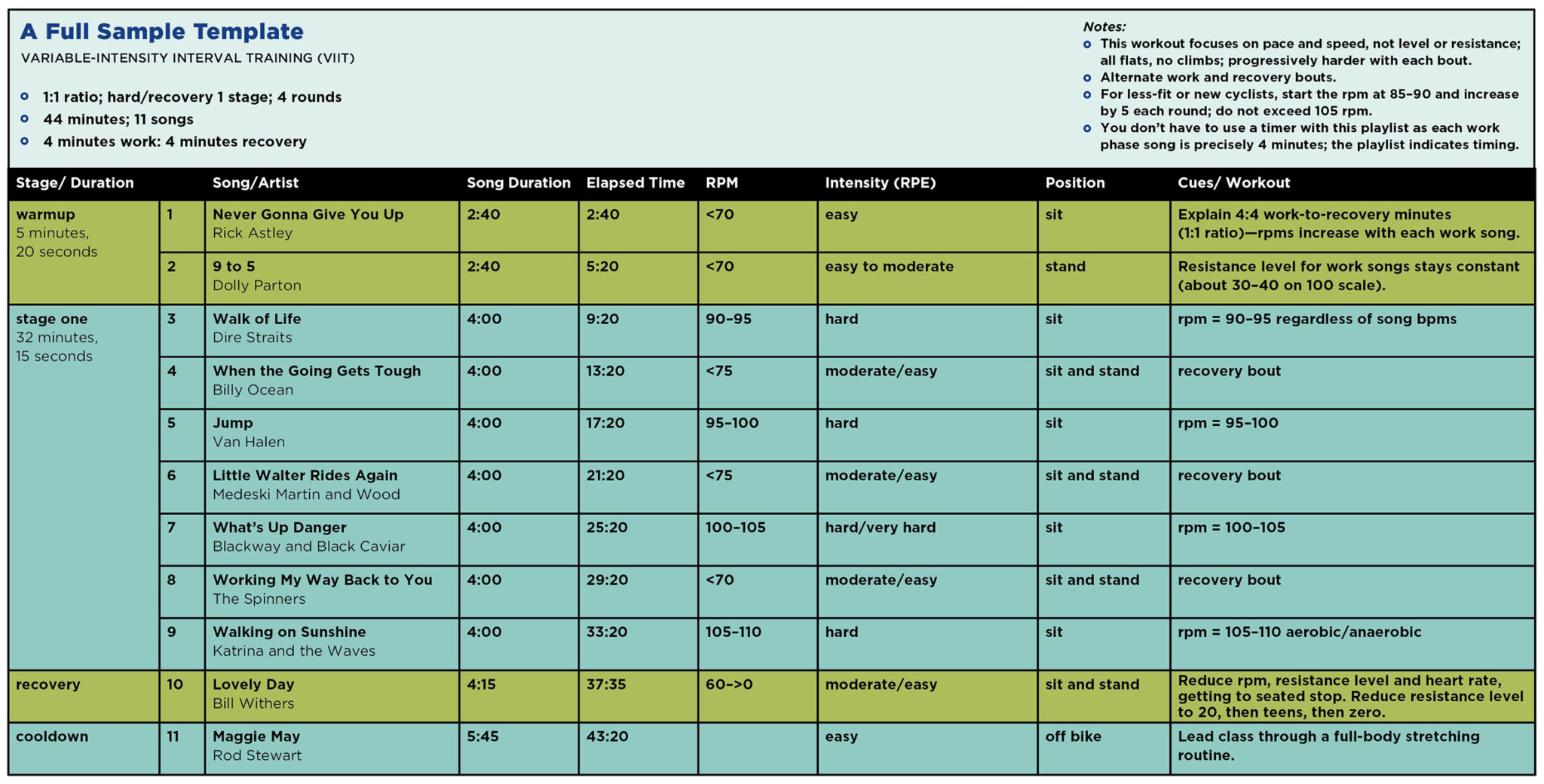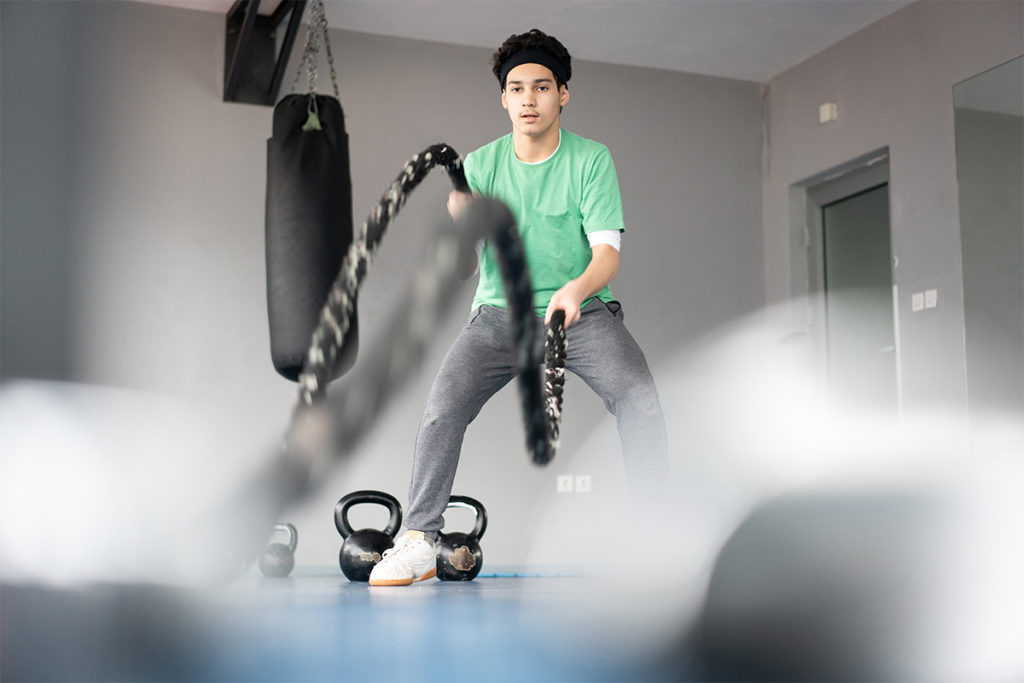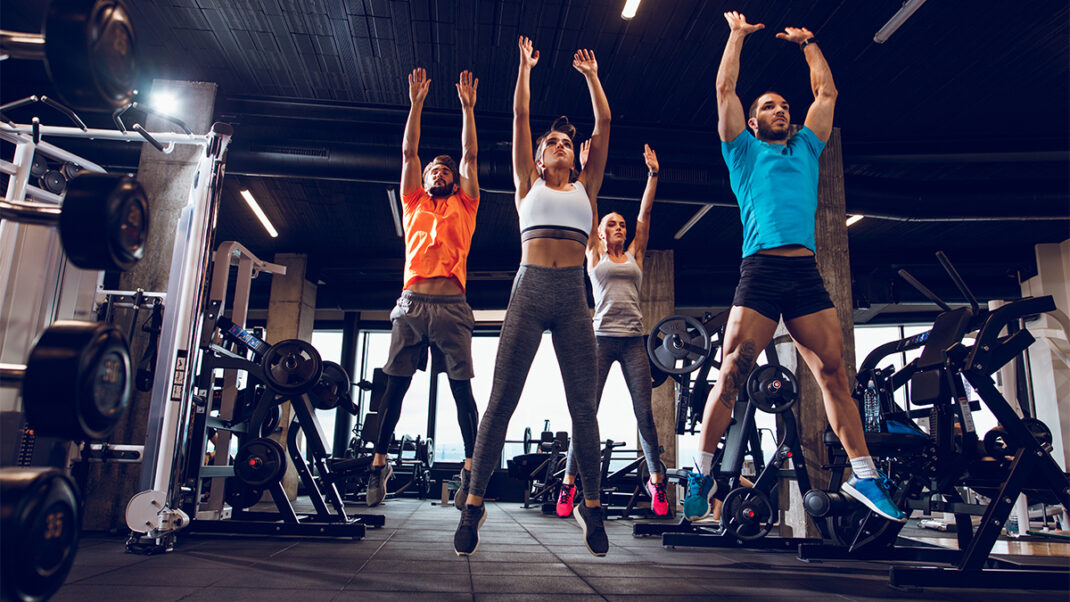Indoor Cycling by Science
Use these calorie-burning, research-based templates in your next class.

There you sit, spinning your mental wheels, trying to create a successful indoor cycling workout . . . again. What if you had an easy-to-follow template that would empower you to design effective, fun classes and get results week after week, ride after ride?
Thanks to Len Kravitz, PhD, professor of exercise science at the University of New Mexico and veteran IDEA presenter—and the various studies he cites—you can take advantage of science-supported protocols to create outstanding workouts. These workouts are based on a session Kravitz presented at the 2020 IDEA® World Virtual Convention that included his list of “10 Great Programs That Burn a Lot of Calories.” Each program, or “formula,” is derived from research on metabolism, fat burning and calorie use.
Of the 10 formulas he cited, five can easily be adapted to cardio indoor cycling classes, using the four-step system described here. Be inspired, as I was, to use his formula to marry science and application. You’ll then have a four-step system and ideas to use without reinventing the (fly)wheel.
Step One: Pick a Formula
Start with any of the five formulas (see “5 Indoor Cycling Formulas,” below). Kravitz uses the Borg Scale of Perceived Exertion (RPE) to identify intensity (6–20 = low to high). If you cue intensity via Borg RPE, then directly carry over the ranges that correlate RPE to your preferred intensity scale. For example, I cue my classes based on four intensity levels: easy, moderate, hard, very hard/anaerobic. Therefore, an RPE of 16 would correlate to “hard” in the system I use, while 11–13 is “moderate.”
Step Two: Create a Grid
Create a blank workout spreadsheet or grid by hand or in Excel, Google Sheets or any format you choose, according to the template or formula you select. Indicate whether you’re in a work or recovery mode, and assign the appropriate timing (minutes or seconds) to each bout. Determine the number of bouts that will match your ride duration and then factor in your warmup and cooldown to get to your total class time: 45, 50 or 60 minutes.
See also: Set the Pace!
Step Three: Label Sections
In this short-and-sweet step, all you have to do is decide whether you’ll meet the stipulated intensity levels via sitting, standing, flats or climbs. Be creative and, of course, consider your playlist options (left). Label each bout accordingly.
Step Four: Build a Playlist
Fill in the blanks with songs that match your bout times and style. Some of these formulas rely more on duration and RPE than rpm, which affects your cuing and expands your song options. That means that, rather than having to find music based on beats per minute that drive rpm, you select a combination of the duration, genre and mood that you deem best. Voilá! You are good to go with an effective, research-based plan.
Examples in Action
Below are three ways to apply the formulas.
4:4 Variable-intensity interval training (VIIT) (two versions)
The work bouts of one 4:4 (VIIT) adaptation are all flats, with each bout seeing an increase in rpm, equivalent to the miles-per-hour increases Kravitz lists (see “5 Indoor Cycling Formulas,” below).
A second 4:4 VIIT workout adheres to the same science-based formula but is divided into two sections: stage one climbs; riders stand for each 4-minute work bout and sit for each 4-minute recovery. Stage two repeats the intensity pattern, this time on flats with higher rpm, while still following the progressive speed aspect. This is the same formula with alternate work and recovery bouts every 4 minutes, amping intensity via speed/rpm increases. These are two workouts ready to go!
4:4 High-Intensity Interval Training (HIIT)
The 4:4 HIIT workout relies on 4-minute songs for each bout. Find appropriate music that exactly matches the duration, if you can; this will free you from having to use a timer or stopwatch to make the transition—you can focus on the participants the entire time since the music essentially “cues” the transitions and bouts. Of course, for the formulas that have 90-second and shorter bouts, you’ll track timing to cue starts and stops, as few songs are 30, 60 or 90 seconds.
As you can see from these examples, you can use and reuse the formulas with ease and confidence. Your participants get structured variety, and you get the satisfaction of offering results-oriented indoor cycling workouts that combine the best of science and your creativity. The next time you need a reliable spark to get you started, you’re all set.
See also: Cycling Class Connection
Thanks to Len Kravitz, PhD, for his permission to base these ideas on his session.
A Note for Group Fitness Managers
If you’re a group fitness manager, whether introverted or extroverted, it may be a good idea to reflect on your leadership style and give a nod to your less-outgoing staff members. Extroverts are vocal and outgoing, and they tend to flourish in group activities. Introverts tend to think first and act later; sometimes their voices get lost in group-think/group-speak projects. It’s important to recognize that you may only be hearing one side of the team equation.
To help introverts feel more welcome, provide time before a meeting for team members to reflect on what you’re asking. Also, welcome feedback after the meeting via text or message. Introverts like to present their work in private with “intermittent communication rather than a constant flow” (Houston 2021). If you’re an introvert and an instructor asks for feedback, it’s okay to say, “May I get back to you?” Just be sure to follow up.
A Full Sample Template
Deck: Variable-Intensity Interval Training (VIIT)
- 1:1 ratio; hard/recovery 1 stage; 4 rounds
- 44 minutes; 11 songs
- 4 minutes work: 4 minutes recovery
Notes:
- This workout focuses on pace and speed, not level or resistance; all flats, no climbs; progressively harder with each bout.
- Alternate work and recovery bouts.
- For less-fit or new cyclists, start the rpm at 85–90 and increase by 5 each round; do not exceed 105 rpm.
- You don’t have to use a timer with this playlist as each work phase song is precisely 4 minutes; the playlist indicates timing.
5 Indoor Cycling Formulas
These workout designs are inspired by Len Kravitz, PhD, as outlined in his 2020 IDEA® World Virtual Convention presentation, “10 Great Workouts That Burn a Lot of Calories.” Of his 10 study-based workouts, the following five effectively carry over to indoor cycling.
4:4 HIIT
- warmup: progressive
- interval: 4-minute bouts at 15–16 RPE; hard
- relief (recovery) interval: 4 minutes at 11–12 RPE; light/easy intensity
- 4 sets of intervals; 32 minutes
4:2 HIIT
- warmup: progressive
- interval: 4-minute bouts at 15–16 RPE; hard
- relief interval: 2 minutes at 11–12 RPE; light/easy intensity
- 4 sets of intervals; 24 minutes
60:75 Low-Volume Interval Training (LVIT)
- warmup: progressive
- alternate 60-second bouts at 16–18 RPE; RPE (hard/very hard) with 75-second bouts of recovery at 11-12 RPE (light/easy intensity)
- Repeat for 8–12 sets; 20–27 minutes
4:4 Variable-Intensity Interval Training (VIIT)
(aka “tempo training”)
- 1:1 work-to-recovery ratio; 4–8 continuous endurance intervals
- warmup: 5–10 minutes at light/easy intensity
- alternate 4 minutes at given speed (hard intensity) with 4 minutes of low-intensity relief (self-selected pace)
- increase speed with each successive bout (6 mph, 6.3 mph, 6.6 mph, 7 mph, 7.3 mph); 20–40 minutes
Combination HIIT and Cardio Conditioning
- warmup: 10 minutes; light/easy intensity
- 20-second sprint, very hard; 1 round
- 40-second relief interval; 1:2 work-to-recovery ratio
- 15-minutes of steady-state at moderate to slightly hard intensity
- 30-second sprint; very hard
- 90-second relief (moderate); 1:3 work-to-recovery ratio up to 6 minutes; 18–22 minutes
Kymberly Williams-Evans, MA
Kymberly Williams-Evans, PhD (ABD) has been a fitness professional on four continents, in four languages, for four decades on land, at sea and across the airwaves. After years of co-hosting an online radio program (Active Aging for BoomChickaBoomers), she reports having interviewed scads of great guests and two really bad ones.







